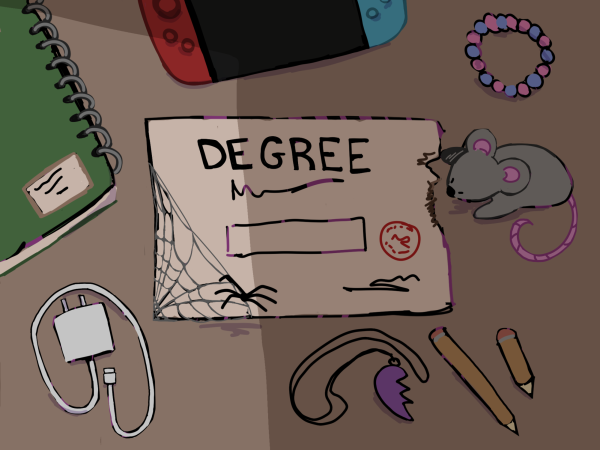Should the death penalty be allowed to live?
YES
-Shirin Afrakheth, Staff Writer
In June of 2015, Dylann Roof, a self-proclaimed white supremacist, fired 70 rounds into an African-American church in Charleston, S.C., killing nine people.
The day after the mass shooting, Roof confessed to his actions in a video released by the FBI and presented by prosecution attorneys at his trial.
“I went to that church in Charleston and I did it,” Roof said laughing.
“Did you shoot them?” a law enforcement officer asked Roof.
“Yes,” Roof replied, followed by another laugh.
There was no empathy in his tone, and his words dripped with malicious intent.
Now, Roof faces the death penalty.
This makes him the first person to be given the death penalty as a result of a hate crime.
While there is much controversy surrounding the death penalty, there are many reasons why it is far more advantageous in comparison to life in prison.
We can potentially prevent violent acts in the future when the death penalty is an option that holds individuals like Roof to the highest punishment.
It also shows society there is a clear standard that mass shooters and murderers are held to. It is a much clearer image than a specific number of years in jail.
After all, how can a layperson distinguish between a 25-year sentence and a 30-year sentence?
A 2008 comprehensive review of capital punishment research since 1975 by Drexel University revealed that each state execution deters an average of 14 murders annually.
Many other punishments fail to bring proper justice to the situation because the penalty, presumably a long period in prison, would be grossly disproportionate to the heinousness of the crime.
When a society fails to proportionately punish criminals, the danger that the public will take the law into its own hands is more prevalent.
This could lead to a very unstable and unreliable justice system and state.
The death penalty also allows family members of the victim to live knowing that there is a federal system in which their other relatives are supported and protected, especially in the case of a hate crime.
On a psychological level, knowing that the murderer has been sentenced to the death penalty can help reduce victims’ fear of the killer.
This greatly aids in assuring that victims’ mental health is well-protected, as well as giving them a form a of closure and a sense of retribution.
Retribution is the rationally supported theory that a criminal deserves a punishment fitting to the gravity of his crime.
Many individuals who oppose the death penalty wrongly equate retribution and revenge.
Whereas revenge knows no bounds, retribution must be limited, proportional and appropriately directed. In this way, the punishment is only enough to fit the crime.
The death penalty honors human dignity by treating the defendant as a free person who is able to control his own destiny for good or for ill.
Furthermore, capital punishment celebrates the dignity of the humans whose lives were negatively impacted by the defendant.
In this way, not only is the death penalty morally acceptable, but it is also our moral obligation and requirement.
The death penalty isn’t only morally justified; it is also lawful and constitutional.
The Fifth Amendment provides that “No person shall be held to answer for a capital…crime, unless on a presentment or indictment of a Grand Jury,’ and that no person shall be ‘deprived of life…without due process of law.”
The main problems that do exist in the death penalty is how it is carried through, not with its fundamental purpose or intention.
But without the death penalty, society’s moral boundaries would shatter.
It is an integral part of our justice system that is absolutely necessary.
NO
-Kimberlee Saxer, Staff Writer
On Jan. 11, Dylann Roof was sentenced to the death penalty, but who knows if his death will be due to a lethal injection or old age.
Roof will likely be on death row for the majority of his life. This was Roof’s first illegal act of any kind. A sentence of life in prison could’ve given the 22-year-old a chance to acknowledge his wrong-doing.
Roof told the courtroom that he wanted to be spared.
“From what I’ve been told, I have a right to ask you to give me a life sentence, but I’m not sure what good that will do anyway,” Roof said. “But what I will say is only one of you has to disagree with the other jurors.”
The victims got justice, yes, but instead of sitting in a jail cell having to constantly think about the crime he committed, he has the constant fear of lethal injection on his mind.
According to the Washington Post, “Not all wanted Roof condemned to die.” A victim’s daughter told the courtroom that she did not want Roof to die, but would rather he sit in a cell and consider the lives that he took.
Due to a blatant premeditated hate crime, Roof will sit on federal death row.
The last federal execution was in 2003 due to concerns about the lethal injection drugs. State and federal agencies rely on three different drugs: an anesthetic, a paralytic, and a drug that stops the heart, causing death.
Megan McCraken, the Eighth Amendment Resource Counsel at UC Berkeley Law School, studies lethal injection drugs for the Death Penalty Clinic.
“If the first drug does not in fact deeply anesthetize the prisoner,” McCraken said, “then he or she could be conscious and aware of being both paralyzed and able to experience pain and the experience of cardiac arrest.”
The death penalty imposes a verdict that is too final. Inducing someone’s heart to stop is cruel and unusual punishment.
California’s death penalty was restored in 1978. But in four decades, only 13 inmates have been executed.
According to the Bureau of Justice Statistics, a total of 3,082 inmates were on death row in 2011. That year, only 43 were executed, 70 had their sentences overturned, and 24 died of natural causes.
An inmate has a slowing rate of a 1.4 percent chance of being executed each year.
More than half of the inmates on death row will likely die before their execution date. These inmates spend a large amount of time fearing their execution and are often in worse conditions than others.
Inmates can be locked up in solitary confinement for up to 23 hours a day, causing housing costs to skyrocket.
According to forbes.com, inmates on death row cost California $137 million annually because of construction costs and the mass security staff. When comparing that to a lifetime incarceration cost of only $11.5 million, the death penalty is simply a waste of money.
If even half of the nearing 3,000 inmates’ sentences were overturned from a death sentence to life in prison without parole, costs would plummet.
The death penalty is not only taking money away from taxpayers nationwide, but it also has the potential to steal lives of innocent men and women.
In a study conducted by the Proceedings of the National Academy of Sciences, one in every 25 inmates will be sentenced to death for a crime they did not commit. The lead writer of this study, Samuel R. Gross, said, “It tells you that a lot of [inmates] haven’t been exonerated. Some of them no doubt have been executed.”
The lives of these wrongly executed inmates were taken away for poor judgement. The idea of an innocent person awaiting their death for a crime they did not commit is immoral.
If they were sentenced to life in prison, they would’ve had a chance to start over.
Death sentences should not be implemented, even in the most severe of cases. Killing others doesn’t make what inmates did go away. It’s just another murder.


Clifford Johnson • Mar 30, 2017 at 3:33 pm
California’s death penalty is exceptionally egregious. Delays exceeding 20 years before a FIRST appeal is decided are commonplace. Such appeals are routinely and perfunctorily dismissed–after so much time, a retrial is virtually unthinkable.
The California Supreme Court has canned language declaring that such delays guarantee extreme care in the verdict and sentence, but the precise opposite is demonstrably the case. For several reasons, the state’s trial court processes offer less safeguards than most other states (e.g. re allowed snitch testimony). Yet California’s reversal rate is ONE SEVENTH of the rate in other states.
See California’s Death Penalty: The California Supreme Court’s Carefulness Con, at https://www.opednews.com/articles/California-s-Death-Penalty-by-Clifford-Johnson-9th-Circuit-Court_California-Politics_California-Proposition-62_California-Proposition-66-161014-271.html.